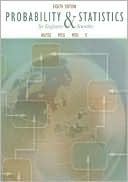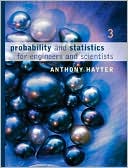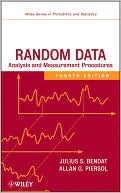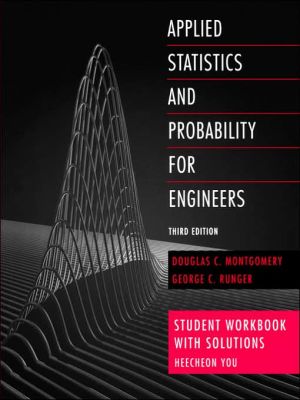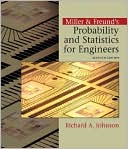Design of Experiments with MINITAB
Most of the classic DOE books were written before DOE software was generally available, so the technical level that they assumed was that of the engineer or scientist who had to write his or her own analysis software. In this practical introduction to DOE, guided by the capabilities of the common software packages, Paul Mathews presents the basic types and methods of designed experiments appropriate for engineers, scientists, quality engineers, and Six Sigma Black Belts and Master Black...
Search in google:
In this book/CD-ROM introduction to the design of experiments (DOE) using common software packages, Mathews, a consultant to engineering organizations, presents basic types and methods of designed experiments appropriate for engineers, scientists, quality engineers, and Six Sigma experts. Although instructions in the use of MINITAB are detailed enough to provide guidance to a new MINITAB user, the book is general enough to be helpful to users of other DOE software packages. The enclosed CD-ROM contains Excel files with data for example problems, homework problems, MINITAB macros, a set of experiment design files with simulation macros in both MINITAB and Excel. Annotation ©2004 Book News, Inc., Portland, OR
PrefacexiiiAcknowledgmentsxixChapter 1Graphical Presentation of Data11.1Introduction11.2Types of Data11.3Bar Charts21.4Histograms31.5Dotplots41.6Stem-and-Leaf Plots41.7Box-and-Whisker Plots51.8Scatter Plots61.9Multi-Vari Charts71.10An Introduction to MINITAB9Chapter 2Descriptive Statistics192.1Introduction192.2Selection of Samples192.3Measures of Location202.4Measures of Variation212.5The Normal Distribution262.6Counting302.7MINITAB Commands to Calculate Descriptive Statistics34Chapter 3Inferential Statistics373.1Introduction373.2The Distribution of Sample Means ([sigma] Known)383.3Confidence Interval for the Population Mean ([sigma] Known)413.4Hypothesis Test for One Sample Mean ([sigma] Known)423.5The Distribution of Sample Means ([sigma] Unknown)523.6Hypothesis Tests for Two Means563.7Inferences About One Variance (Optional)613.8Hypothesis Tests for Two Sample Variances653.9Quick Tests for the Two-Sample Location Problem683.10General Procedure for Hypothesis Testing733.11Testing for Normality753.12Hypothesis Tests and Confidence Intervals with MINITAB793.13Sample-Size Calculations82Chapter 4DOE Language and Concepts934.1Introduction934.2Design of Experiments: Definition, Scope, and Motivation934.3Experiment Defined944.4Identification of Variables and Responses944.5Types of Variables964.6Types of Responses974.7Interactions984.8Types of Experiments994.9Types of Models1004.10Selection of Variable Levels1054.11Nested Variables1064.12Covariates1074.13Definition of Design in Design of Experiments1074.14Types of Designs1084.15Randomization1094.16Replication and Repetition1134.17Blocking1144.18Confounding1174.19Occam's Razor and Effect Heredity1184.20Data Integrity and Ethics1194.21General Procedure for Experimentation1204.22Experiment Documentation1364.23Why Experiments Go Bad139Chapter 5Experiments for One-Way Classifications1435.1Introduction1435.2Analysis by Comparison of All Possible Pairs Means1445.3The Graphical Approach to ANOVA1455.4Introduction to ANOVA1475.5The Sum of Squares Approach to ANOVA Calculations1555.6The Calculating Forms for the Sums of Squares1595.7ANOVA for Unbalanced Experiments1605.8After ANOVA: Comparing the Treatment Means1615.9ANOVA with MINITAB1675.10The Completely Randomized Design1725.11Analysis of Means1765.12Response Transformations1775.13Sample Size for One-Way ANOVA1855.14Design Considerations for One-Way Classification Experiments188Chapter 6Experiments for Multi-Way Classifications1916.1Introduction1916.2Rationale for the Two-Way ANOVA1926.3The Sums of Squares Approach for Two-Way ANOVA (One Replicate)2026.4Interactions2036.5Interpretation of Two-Way Experiments2106.6Factorial Designs2136.7Multi-Way Classification ANOVA with MINITAB2156.8Design Considerations for Multi-Way Classification Designs227Chapter 7Advanced ANOVA Topics2317.1Incomplete Factorial Designs2317.2Latin Squares and Other Squares2327.3Fixed and Random Variables2357.4Nested Designs2487.5Power Calculations250Chapter 8Linear Regression2738.1Introduction2738.2Linear Regression Rationale2738.3Regression Coefficients2778.4Linear Regression Assumptions2828.5Hypothesis Tests for Regression Coefficients2858.6Confidence Limits for the Regression Line2898.7Prediction Limits for the Observed Values2908.8Correlation2938.9Linear Regression with MINITAB2998.10Transformations to Linear Form3018.11Polynomial Models3068.12Goodness of Fit Tests3098.13Errors in Variables3168.14Weighted Regression3178.15Coded Variables3188.16Multiple Regression3208.17General Linear Models3278.18Sample Size Calculations for Linear Regression3378.19Design Considerations for Linear Regression345Chapter 9Two-Level Factorial Experiments3479.1Introduction3479.2The 2[superscript 1] Factorial Experiment3479.3The 2[superscript 2] Factorial Experiment3519.4The 2[superscript 3] Factorial Design3629.5The Addition of Center Cells to 2[superscript k] Designs3679.6General Procedure for Analysis of 2[superscript k] Designs3709.72[superscript k] Factorial Designs in MINITAB3729.8Extra and Missing Values3899.9Propagation of Error3909.10Sample Size and Power3929.11Design Considerations for 2[superscript k] Experiments397Chapter 10Fractional Factorial Experiments39910.1Introduction39910.2The 2[superscript 5-1] Half-Fractional Factorial Design40010.3Other Fractional Factorial Designs40610.4Design Resolution40710.5The Consequences of Confounding41110.6Fractional Factorial Designs in MINITAB41510.7Interpretation of Fractional Factorial Designs42110.8Plackett-Burman Designs43210.9Sample-Size Calculations43210.10Design Considerations for Fractional Factorial Experiments434Chapter 11Response-Surface Experiments43711.1Introduction43711.2Terms in Quadratic Models43811.32[superscript k] Designs with Centers44111.43[superscript k] Factorial Designs44311.5Box-Behnken Designs44411.6Central Composite Designs44811.7Comparison of the Response-Surface Designs45311.8Response Surface Designs in MINITAB45811.9Sample-Size Calculations46611.10Design Considerations for Response-Surface Experiments474Appendix AStatistical Tables477A.1Greek Characters477A.2Normal Distribution: Values of p = [Phi (-infinity less than sign z less than sign z subscript p])478A.3Student's t Distribution: Values of t[subscript p] where P ([t subscript p less than sign t less than sign infinity]) = p480A.4X[superscript 2] Distribution: Values of X[superscript 2 subscript p] where P ([0 less than sign X superscript 2 less than sign X superscript 2 subscript p]) = p481A.5F Distribution: Values of F[subscript p] where P ([F subscript p less than sign F less than sign infinity]) = p482A.6Critical Values for Duncan's Multiple Range Test [characters not reproducible]484A.7Critical Values of the Studentized Range Distribution (Q[subscript 0.05](k))485A.8Critical Values for the One-Way Analysis of Means [characters not reproducible]486A.9Fisher's Z Transformation: Values of Z = 1/2ln(1+r / 1-r)487Bibliography489Index491

